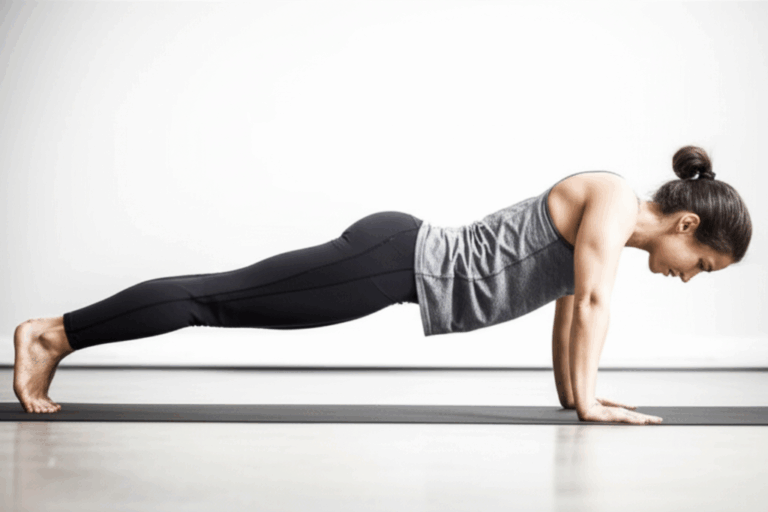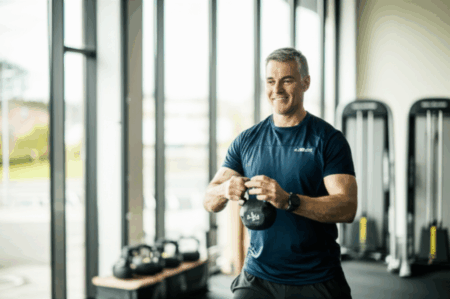The plank is often hailed as the cornerstone of core stability and endurance, a seemingly simple static hold that delivers profound benefits for your entire body. Far from being a mundane exercise, planks are a powerful tool to enhance posture, prevent injury, and build robust strength that translates into all aspects of your life. A strong core, encompassing more than just your “six-pack” muscles, supports your spine, improves balance, and can even alleviate lower back pain.
As a yoga and wellness coach, I often see individuals stuck in a rut with the same plank routine. To truly challenge your midsection and foster continuous progress, it’s essential to explore variations. These progressive tweaks not only fire up different abdominal muscles but also engage your arms, shoulders, and back, leading to a more comprehensive strength and stability. Let’s delve into four plank variations, moving from foundational to more advanced, to help you cultivate a resilient and powerful core.
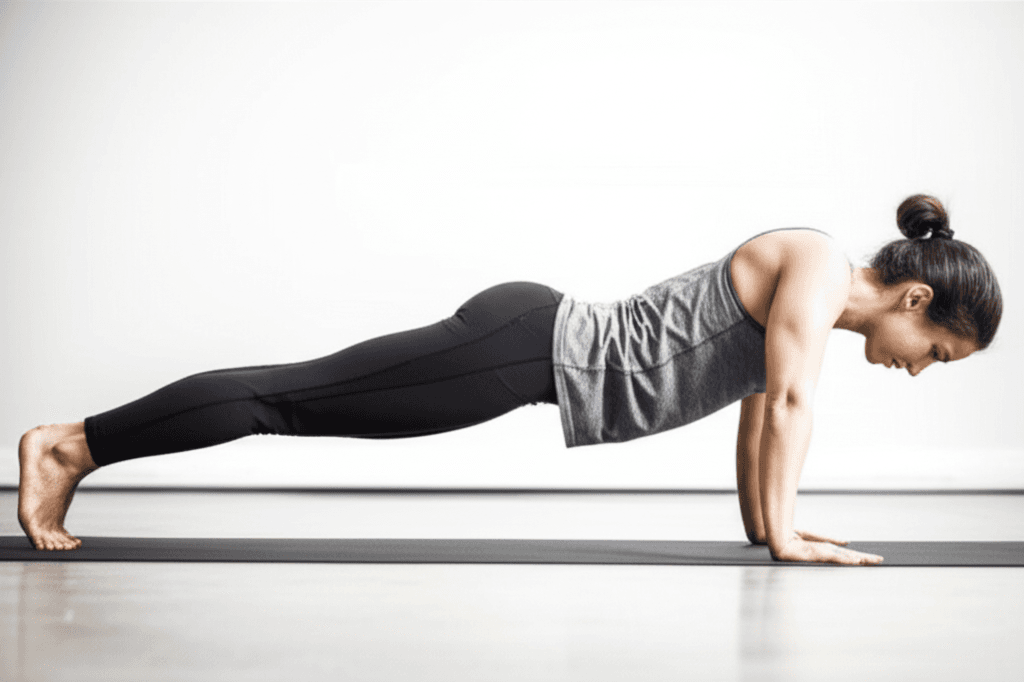
The Foundation of Strength: Why Planks Are Essential
Planks are an isometric exercise, meaning your muscles contract without changing length, which significantly improves muscular endurance. They engage multiple muscle groups simultaneously, including your abdominals (transversus abdominis, rectus abdominis, obliques), glutes, quadriceps, spinal erectors, upper body, and hip flexors. This total-body engagement makes them incredibly efficient.
Beyond building strength, planks are lauded for:
- Reduced Risk of Injury: By strengthening the core without placing undue strain on the neck and lumbar spine, unlike some traditional exercises like sit-ups or crunches, planks help protect against injuries.
- Lower Back Pain Relief: A strong core provides structural stability to the lumbar spine, which can help reduce and even eliminate lower back discomfort.
- Improved Posture: Planks promote better posture by strengthening the muscles responsible for supporting your spine and keeping your body upright.
- Enhanced Balance and Coordination: Challenging deep abdominal muscles and maintaining a straight back while balancing your weight on your hands and toes requires controlled movement and stability, thereby improving balance and coordination.
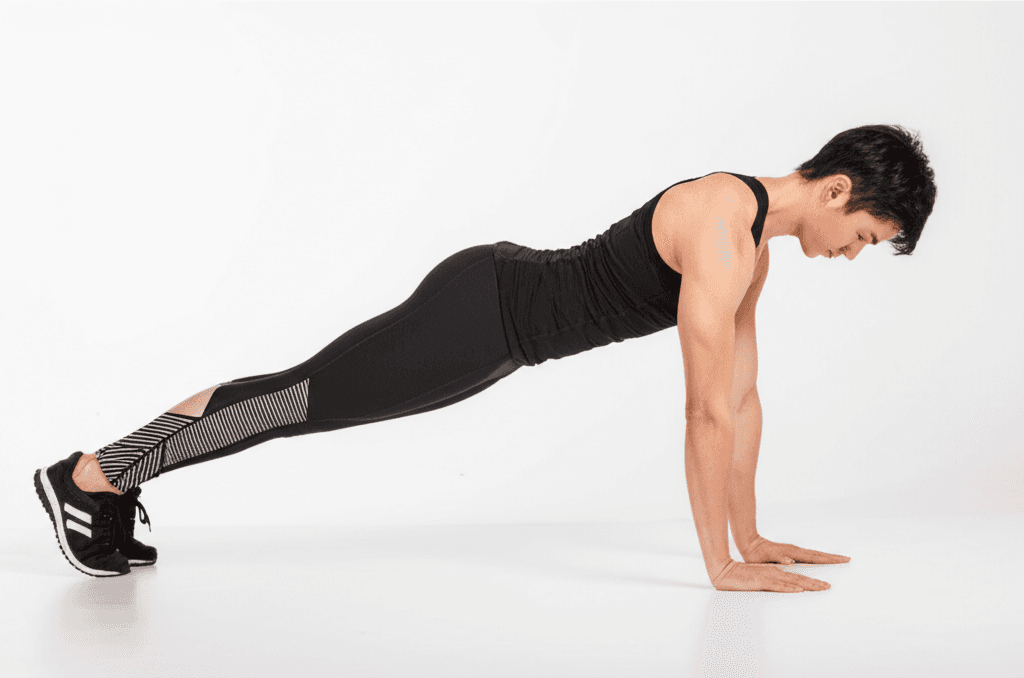
General Tips for Perfect Plank Form
Before diving into variations, mastering the basic plank form is crucial to maximize benefits and prevent injury.
- Straight Line: Your body should form a straight line from your head to your heels (or knees for modifications), avoiding any sagging in the hips or raising of the buttocks.
- Engage Your Core: Actively draw your navel towards your spine, as if bracing for a punch, to engage your deep abdominal muscles.
- Shoulder Alignment: Ensure your shoulders are stacked directly over your elbows (for forearm plank) or wrists (for high plank). Spread your fingers wide and distribute weight evenly through your hands if on palms.
- Neutral Spine and Neck: Keep your gaze down, about a foot in front of your hands, to maintain a neutral neck and spine alignment. Avoid letting your head drop or hyperextending your neck.
- Breathe Deeply: Don’t hold your breath! Focus on steady, even breaths, breathing into your stomach.
- Activate Glutes and Quads: Squeeze your glutes and engage your quadriceps, pressing back through your heels to create full-body tension.
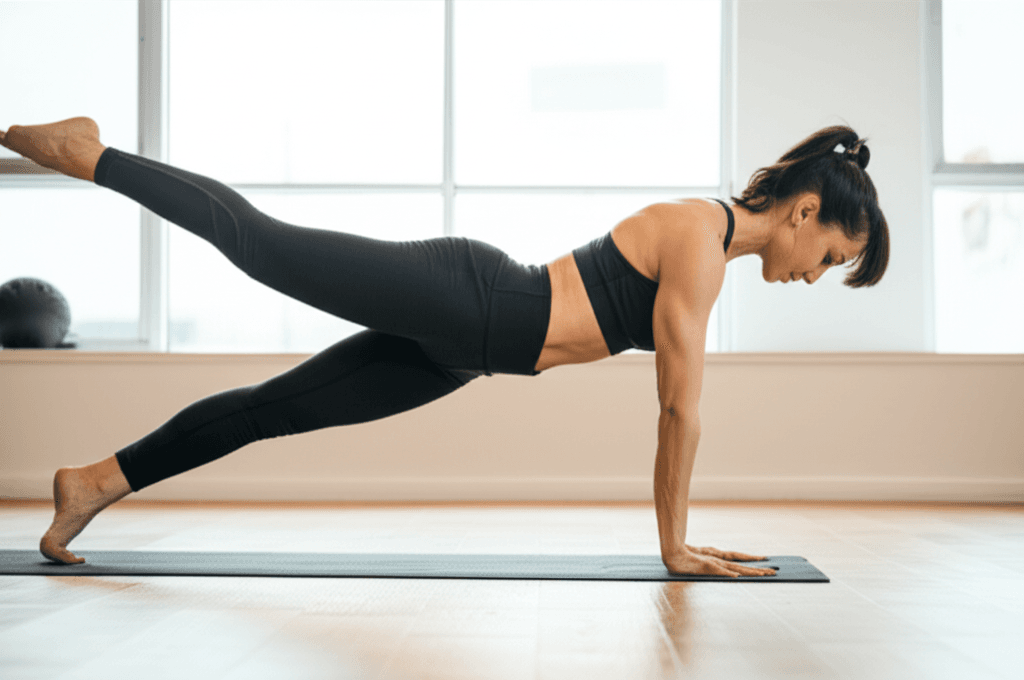
4 Plank Variations for Stability and Endurance
Here are four progressive plank variations to build stability and endurance, moving from foundational to more dynamic challenges.
1. Forearm Plank: The Core Foundation
The Forearm Plank is an excellent starting point for building core strength and endurance, as it places less load on the wrists compared to a high plank.
How to Perform:
- Begin by lying face down on your mat.
- Prop yourself up on your forearms and toes. Your elbows should be directly underneath your shoulders, and your forearms should be parallel, or with hands clasped, facing forward.
- Lift your body off the mat, forming a straight line from your head to your heels.
- Engage your abdominal muscles, glutes, and quadriceps.
- Keep your gaze directed towards the floor to maintain a neutral neck.
- Hold this position for 15-60 seconds, or as long as you can maintain proper form.
Benefits: This variation is highly effective for improving core strength, enhancing stability, and building muscular endurance without stressing the wrists.
Progression Tip: If this is too challenging, start with a Knee Plank (Half Plank) by keeping your knees on the ground and forming a straight line from your head to your knees.
2. High Plank: Engaging Upper Body and Core
The High Plank, also known as Full Plank or Push-up Position, builds upon the forearm plank by further engaging the upper body, shoulders, and arms.
How to Perform:
- Start on your hands and toes, as if at the top of a push-up.
- Place your hands directly under your shoulders, fingers spread wide, with middle fingers pointing forward.
- Extend your legs back, grounding your toes into the floor. Your body should form a straight line from head to heels.
- Actively press the floor away with your palms and engage your arm muscles, drawing your triceps in.
- Squeeze your glutes and pull your belly button towards your spine, engaging your entire core.
- Keep your neck and spine neutral, looking at a spot on the floor about a foot beyond your hands.
- Hold for 15-60 seconds.
Benefits: This variation strengthens the core, shoulders, triceps, and wrists, improving overall upper body stability and endurance.
3. Side Plank: Oblique Strength and Balance
The Side Plank is excellent for targeting the oblique muscles on the sides of your core, as well as improving balance and hip stability.
How to Perform:
- Begin by lying on your side, stacking your feet one on top of the other.
- Prop yourself up on one forearm, ensuring your elbow is directly beneath your shoulder. Your forearm should be perpendicular to your body.
- Lift your hips off the floor, forming a straight line from your head to your heels.
- Engage your obliques, pressing up through your supporting forearm and lifting your hips towards the ceiling.
- You can extend your free arm straight up towards the ceiling or rest it on your hip.
- Hold for 15-30 seconds on each side.
Benefits: Side planks enhance oblique strength, improve balance, and increase stability in the hips and shoulders.
Progression Tip: For added challenge, lift your top leg towards the ceiling while maintaining your side plank.
4. Plank with Opposite Arm and Leg Lift: Advanced Stability and Coordination
This advanced variation significantly challenges your balance, stability, and coordination, forcing your core to work harder to prevent rotation and maintain a steady body.
How to Perform:
- Start in a high plank position, with hands under shoulders and body in a straight line.
- Engage your core deeply, pressing through your grounded hand and foot.
- Slowly lift one arm straight out in front of you, simultaneously lifting the opposite leg straight back.
- Keep your hips and shoulders as still and square to the mat as possible, resisting the urge to tilt or rotate.
- Reach in opposite directions through your extended hand and foot, drawing in around your midsection.
- Hold for 3-5 seconds with control, then slowly return to the high plank.
- Repeat on the other side. Aim for 8-12 repetitions on each side.
Benefits: This dynamic plank variation builds exceptional core stability, improves proprioception (body awareness), and strengthens the entire posterior chain. It requires significant coordination and control.
Progression Tip: If lifting both simultaneously is too difficult, start by lifting just one arm, then just one leg, before combining the movements. Widening your feet slightly in the high plank can also provide more lateral stability when lifting a limb.
By incorporating these four plank variations into your fitness routine, you’ll continuously challenge your core, build impressive stability, and cultivate the endurance needed for both everyday activities and advanced physical pursuits. Remember to always prioritize proper form over duration or repetitions to reap the full benefits and prevent injury.




